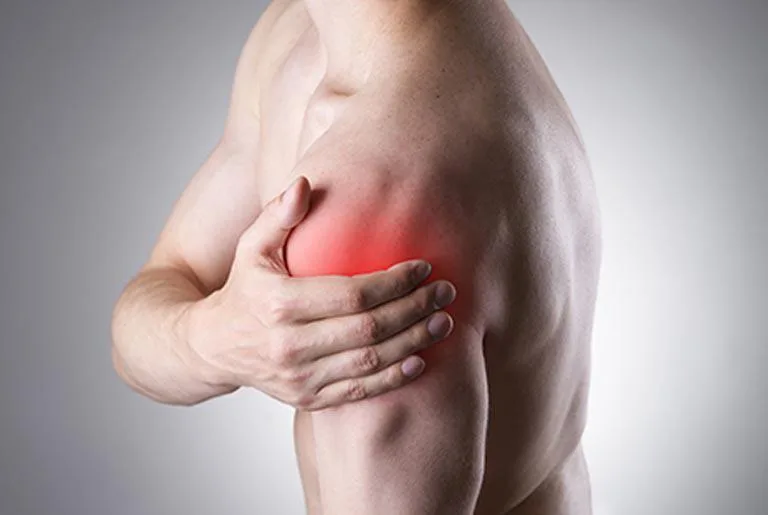Introduction
Welcome to our comprehensive guide on Myofascial Pain Syndrome (MPS). As experts in the field, we’re here to demystify this condition, exploring its symptoms, causes, and the most effective treatments available today.
Aspadol 200mg is emerging as one of the best medications in pain management in modern times. It is used to treat different types of pain such as acute or chronic pain. In this post, we will understand, what it is, how does works, its benefits, its side effects, and many more things, so keep reading if you are about to take or already taking Aspadol Er Tablet.
What is Myofascial Pain Syndrome?
Myofascial Pain Syndrome is a chronic pain disorder characterized by localized muscle pain and tenderness. It occurs when pressure is applied to sensitive points in your muscles, called trigger points, leading to pain and discomfort. These trigger points can develop due to repetitive motions, poor posture, muscle overuse, or injury.
Symptoms of Myofascial Pain Syndrome
Muscle Pain and Tenderness
The hallmark symptom of MPS is muscle pain and tenderness. You may experience aching, stabbing, or burning sensations in the affected muscles. This pain can range from mild discomfort to severe agony, impacting your daily activities and quality of life.
Pain o soma 350mg its potent muscle relaxant properties, it works swiftly to alleviate discomfort and restore flexibility, allowing you to get back to living life to the fullest. Say goodbye to muscle-related woes and embrace the comfort and relief offered by Pain O Soma 350mg.
Restricted Range of Motion
Individuals with MPS often experience restricted range of motion in the affected muscles or joints. This can make simple tasks such as reaching, bending, or lifting objects challenging and painful.
Muscle Stiffness
Muscle stiffness is another common symptom of MPS. You may notice that your muscles feel tight or tense, especially after periods of inactivity or prolonged sitting.
Trigger Points
Trigger points are specific areas within the muscle that are highly sensitive to pressure. When pressed, these points can elicit intense pain that radiates to other parts of the body, known as referred pain.
Causes of Myofascial Pain Syndrome
While the exact cause of MPS remains unclear, several factors may contribute to its development:
- Muscle Overuse: Repetitive motions or activities that strain the muscles can lead to the formation of trigger points.
- Poor Posture: Maintaining poor posture for extended periods puts undue stress on certain muscles, increasing the risk of developing MPS.
- Injury or Trauma: Accidents, sports injuries, or surgical procedures can damage muscle tissue, triggering the onset of MPS.
- Stress and Anxiety: Emotional stress and tension can exacerbate muscle pain and contribute to the development of trigger points.
Diagnosing Myofascial Pain Syndrome
Diagnosing MPS can be challenging due to its similarity to other musculoskeletal conditions. Your healthcare provider will perform a thorough physical examination and may use diagnostic tests such as electromyography (EMG) or MRI to rule out other possible causes of your symptoms.
Treatments for Myofascial Pain Syndrome
Physical Therapy
Physical therapy plays a crucial role in managing MPS by improving muscle flexibility, strength, and overall function. Therapeutic techniques such as massage, stretching exercises, and manual therapy can help alleviate pain and reduce the severity of trigger points.
Trigger Point Injections
For severe cases of MPS, trigger point injections may be recommended. During this procedure, a healthcare provider injects a local anesthetic or corticosteroid directly into the trigger point to provide immediate pain relief and reduce inflammation.
Medications
Certain medications, such as nonsteroidal anti-inflammatory drugs (NSAIDs) or muscle relaxants, may be prescribed to help alleviate pain and improve muscle function in individuals with MPS.
Alternative Therapies
Complementary and alternative therapies, including acupuncture, acupressure, and dry needling, have shown promise in relieving pain and reducing muscle tension associated with MPS.
Lifestyle Modifications
In addition to medical interventions, making certain lifestyle modifications can help manage MPS symptoms and improve overall quality of life:
- Practice Good Posture: Maintain proper posture while sitting, standing, and performing daily activities to reduce strain on your muscles.
- Stress Management: Engage in relaxation techniques such as deep breathing, meditation, or yoga to alleviate stress and tension.
- Regular Exercise: Incorporate low-impact exercises such as swimming, walking, or cycling into your routine to improve muscle strength and flexibility.
Conclusion
Myofascial Pain Syndrome can significantly impact your daily life, but with the right approach to treatment and management, relief is possible. By understanding the symptoms, causes, and available treatment options, you can take proactive steps towards alleviating pain and restoring function.

